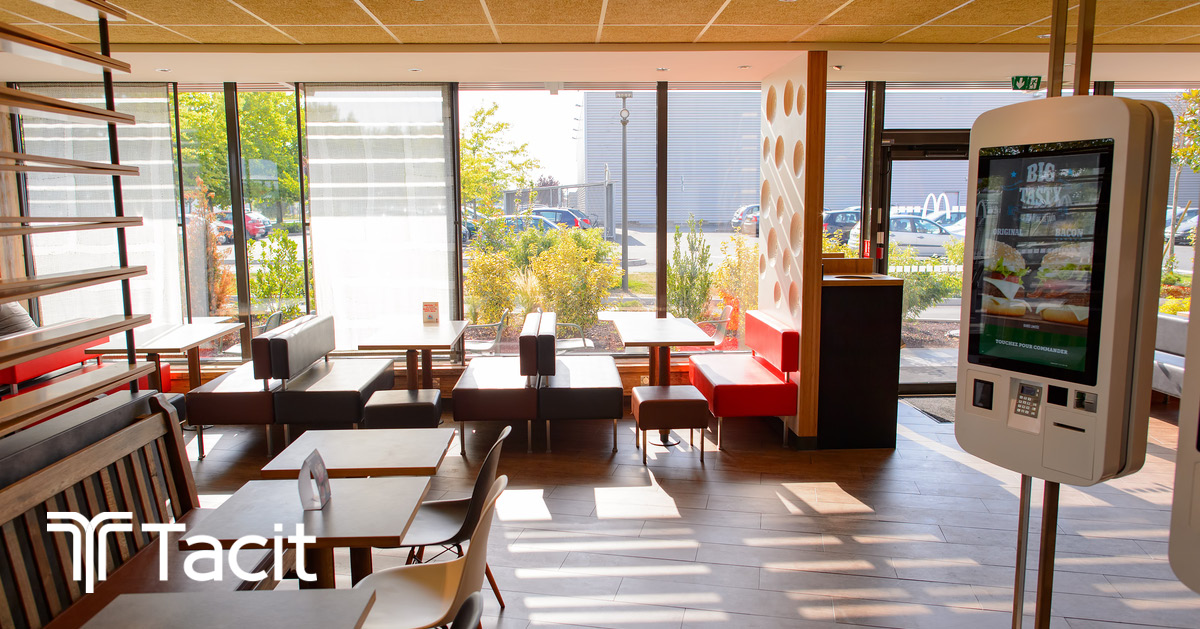
11 Jun Best Practices for Deploying Self-Order Kiosks in Restaurants
From the use of data to new technologies for digital food ordering, restaurants are evolving. They are more than simply places to eat, and the amenities in them, particularly self-ordering kiosks in restaurants, influence customer experiences, and profitability. Furthermore, statistics show that customers are more likely to use a kiosk when the cashier line is too long. Tacit clients have found similar cases, noting, “we look at self-order kiosks in restaurants as a way to take off some pressure at least on the cashier end. I mean the food is still moving, and the customers still need to order. If kiosks can reduce the line in the restaurant, it creates a unique perception for guests that the restaurant is not too busy.”
With demand for kiosks growing, restaurateurs clearly need to know a few best practices to maximize ROI and value.
Recognize Your Limited Experience With Self-Order Kiosks in Restaurants
The first step to deploying self-order kiosks in restaurants lies in understanding their complexity. These kiosks are not simple ATMs; they are online ordering portals that can customize virtually any item, make ordering easy for all patrons, process payments, and more. Thus, they are not simple “turn-it-on” point-of-sale systems. They require connections and integrations—things which a restaurateur may not know how to do.
As explained by QSR Magazine, “despite your best efforts, you’re not a technology company. Mobile Device Management (MDM) administration to push well-tested internal updates and data to your kiosk tablets is not your specialty. More importantly, your company likely isn’t equipped with sufficient support to manage replacement and repair for kiosk components (e.g. tablet, card reader, etc.) at any U.S.-based location when they go down so your store operations aren’t negatively impacted, thereby damaging your brand.”
Ensure Your Kiosks Are Compatible With Existing Software and Platforms
Self-order kiosks in restaurants are also not universally designed to work with every software and POS on the planet. The concept might transcend cultural differences, but what about the software powering your existing digital food ordering capabilities? Those systems need to be compatible, and on the note of compatibility, it is key to integrate those systems with your new kiosks.
Ensure Kiosks Are Securely Located and Connections Maintain Cybersecurity Protocols
Kiosks are virtual POS terminals. They need to be treated with the same security measures as the cash register, and they need to be accessible. User-friendly kiosks are critical to ensuring all guests feel comfortable using them and understand how to place orders. This transcends written instructions too. Have you ever wondered why the kiosk menus at McDonald’s have differently named sodas when they are self-serve? The answer is simple.
Not everyone can read. Not everyone can see easily. So, the kiosks need to be immediately recognizable for all demographics and cultures. Of course, according to Fast Casual, restaurants must be careful by “choosing a company that can fully secure your transactions using cloud server management while developing PCI and ADA compliant software is a wise choice. Using custom development to make your applications on-brand is also worthwhile.”
Reap the Rewards of Self-Order Kiosks in Your Restaurant Now
The evidence is clear. Organizations that use self-order kiosks in restaurants see higher average check sizes. In industries with hard-to-pronounce items, such as fine dining, self-order kiosks have increased ticket sizes by 8.4% or more, reports a MarketScale publication. Moreover, self-order kiosks allow employees to focus more on fulfilling orders and providing top-notch customer service. Find out how your restaurant can become the next digital frontier in your area by visiting Tacit online today.

No Comments